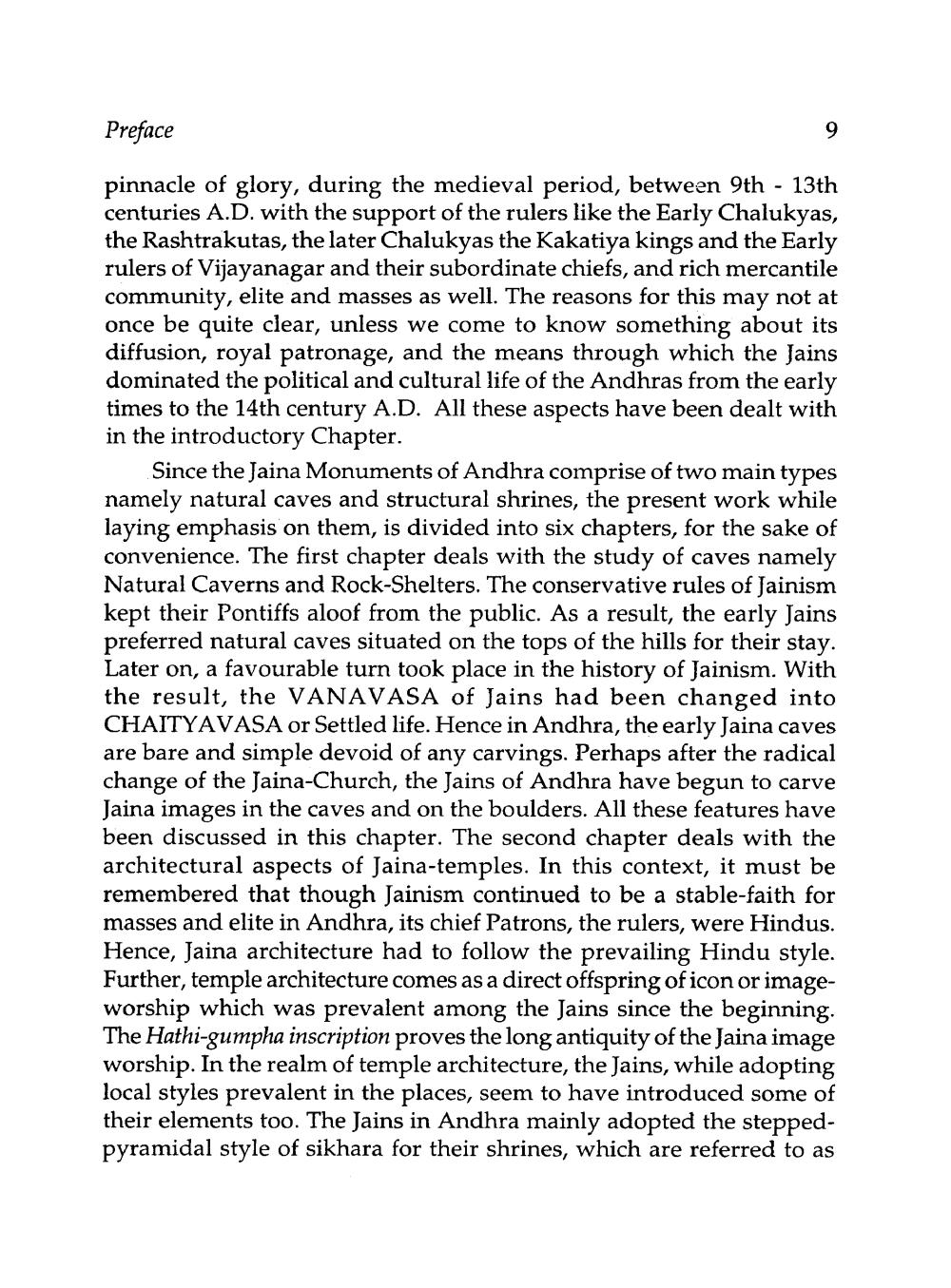________________
Preface
pinnacle of glory, during the medieval period, between 9th - 13th centuries A.D. with the support of the rulers like the Early Chalukyas, the Rashtrakutas, the later Chalukyas the Kakatiya kings and the Early rulers of Vijayanagar and their subordinate chiefs, and rich mercantile community, elite and masses as well. The reasons for this may not at once be quite clear, unless we come to know something about its diffusion, royal patronage, and the means through which the Jains dominated the political and cultural life of the Andhras from the early times to the 14th century A.D. All these aspects have been dealt with in the introductory Chapter.
Since the Jaina Monuments of Andhra comprise of two main types namely natural caves and structural shrines, the present work while laying emphasis on them, is divided into six chapters, for the sake of convenience. The first chapter deals with the study of caves namely Natural Caverns and Rock-Shelters. The conservative rules of Jainism kept their Pontiffs aloof from the public. As a result, the early Jains preferred natural caves situated on the tops of the hills for their stay. Later on, a favourable turn took place in the history of Jainism. With the result, the VANAVASA of Jains had been changed into CHAITYAVASA or Settled life. Hence in Andhra, the early Jaina caves are bare and simple devoid of any carvings. Perhaps after the radical change of the Jaina-Church, the Jains of Andhra have begun to carve Jaina images in the caves and on the boulders. All these features have been discussed in this chapter. The second chapter deals with the architectural aspects of Jaina-temples. In this context, it must be remembered that though Jainism continued to be a stable-faith for masses and elite in Andhra, its chief Patrons, the rulers, were Hindus. Hence, Jaina architecture had to follow the prevailing Hindu style. Further, temple architecture comes as a direct offspring of icon or image worship which was prevalent among the Jains since the beginning. The Hathi-gumpha inscription proves the long antiquity of the Jaina image worship. In the realm of temple architecture, the Jains, while adopting local styles prevalent in the places, seem to have introduced some of their elements too. The Jains in Andhra mainly adopted the steppedpyramidal style of sikhara for their shrines, which are referred to as




